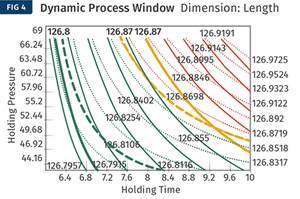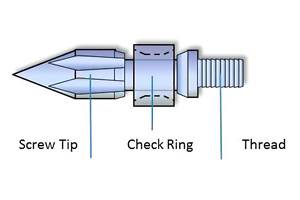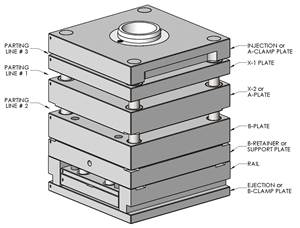Dual-Cure PUR Coatings Boost Performance Of In-Mold Decorating Films
A new version of in-mold decorating technology, developed initially for exterior auto body components, uses dual-cure coating technology to provide a paint film that is both stretchable for good thermoformability and also provides the high gloss and durability of conventional paints.
Share
Read Next
A new version of in-mold decorating technology, developed initially for exterior auto body components, uses dual-cure coating technology to provide a paint film that is both stretchable for good thermoformability and also provides the high gloss and durability of conventional paints. Developed by Bayer MaterialScience in Germany, this film-insert molding technology (which Bayer abbreviates as IMF) is said to offer both economical and environmental advantages over traditional paint lines. The focus of this development was to create hard, tough film coatings that can withstand abuse from weather, road grit, and mechanical car washes throughout the car’s life.
Bayer coating expert Dr. Jan Weikard, head of the Business Development Waterborne UV Systems sector of Bayer’s Coatings, Adhesives, and Sealants Business, says the new IMF technology is in field trials on a roof module at Daimler-Chrysler and has attracted lots of interest from other automakers. Weikard says Bayer will license its IMF dual-cure coating technology to companies that make films for in-mold decorating and market them to processors.
How it’s different
IMF processes for exterior body parts require a thermally stable plastic carrier film such as polycarbonate. The new technology is in the decorative coatings applied to the carrier film. Weikard explains, “For these painted films to have the quality and durability of paint, you need high crosslink density, which is not possible with the thermoplastics usually used in IMF. With our new version of the technology, we apply a two-layer paint to the film, which includes a dual-cure, thermoset polyurethane coating.”
In the first step, a standard flexible base coat that has the decorative color and/or metallic effect is applied to the film. This is followed by application of a proprietary uv-curable PUR clear coat, which is highly crosslinkable and affords the film excellent chemical resistance, mechanical strength, and high gloss that can match body paint.
The key here is that the drying and hardening of the paint systems is performed in two different steps. First, as the base coat and clear coat are applied to the carrier film, each is dried with heat in an ambient-air oven. This partial curing leaves the paint film flexible enough to be stretched through thermoforming without cracking. Says Weikard, “In this drying step, you have a PUR reaction in the top coat that builds long PUR chains that are still thermoformable, but there is no crosslinking yet.” This is the form in which the IMF films would usually be supplied to processors.
After thermoforming, the processor would crosslink and harden the clear coat with exposure to standard high-energy uv lamps. “The relatively low-molecular-weight PUR oligomers are dual-functional in that there are additional acrylic double bonds that allow for the needed high crosslinking to take place under uv radiation.” Now fully cured, the preformed paint films can then be placed in a mold and backed up by injection molding with thermoplastics or by RIM polyurethane.
Potential applications
Bayer’s Weikard says fenders are a key target application, because many automakers want to get away from using painted SMC. “The painted film could be used with SMC or RIM urethane,” he ventures. Other likely exterior components are rocker panels and, farther down the road, bumpers.
Non-automotive applications that also seem particularly attractive for the IMF technology, are communications devices, computers, and consumer electronics. Says Weikard, “Insert film molding is already getting use in such applications, but we think we offer a new version that could be more economical for high-end PDAs and cell phones.”
Related Content
Optimizing Pack & Hold Times for Hot-Runner & Valve-Gated Molds
Using scientific procedures will help you put an end to all that time-consuming trial and error. Part 1 of 2.
Read MoreGot Streaks or Black Specs? Here’s How to Find and Fix Them
Determining the source of streaking or contamination in your molded parts is a critical step in perfecting your purging procedures ultimately saving you time and money.
Read MoreHow to Design Three-Plate Molds, Part 1
There are many things to consider, and paying attention to the details can help avoid machine downtime and higher maintenance costs, and keep the customer happy.
Read MoreUse These 7 Parameters to Unravel the Melt Temperature Mystery
Despite its integral role in a stable process and consistent parts, true melt temperature in injection molding can be an enigma. Learning more about these seven parameters may help you solve the puzzle.
Read MoreRead Next
Making the Circular Economy a Reality
Driven by brand owner demands and new worldwide legislation, the entire supply chain is working toward the shift to circularity, with some evidence the circular economy has already begun.
Read More








